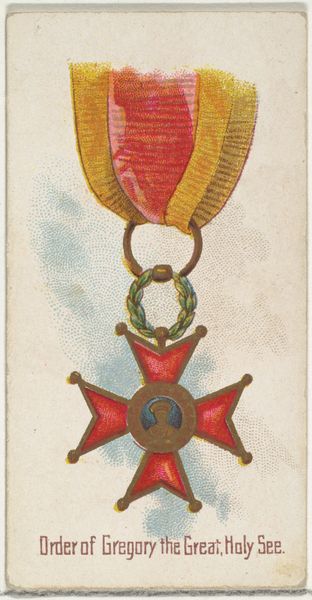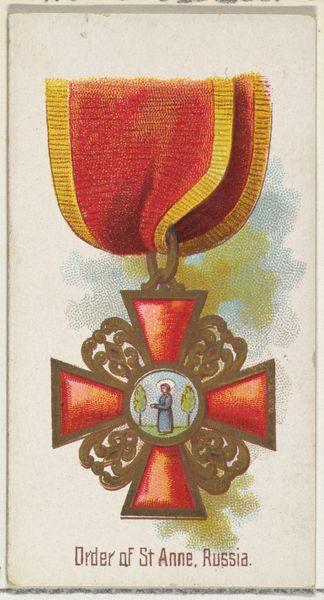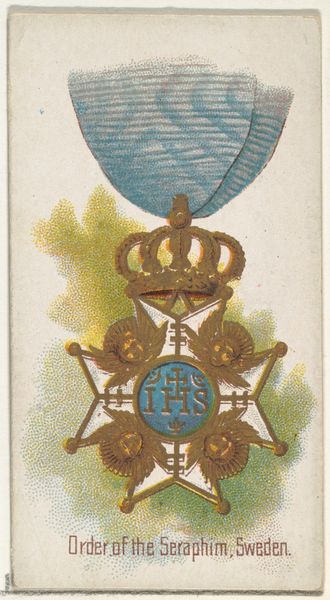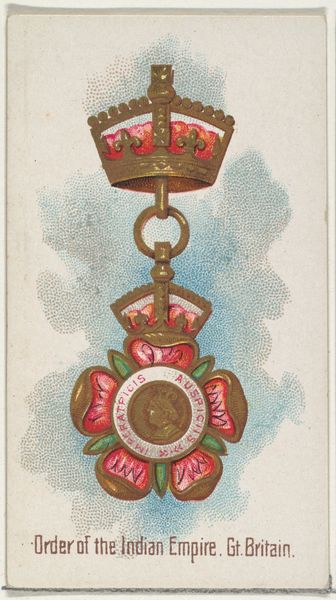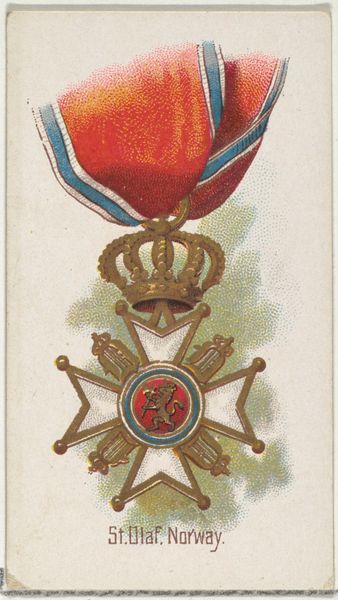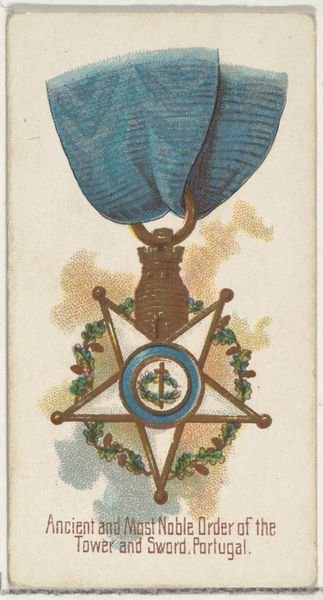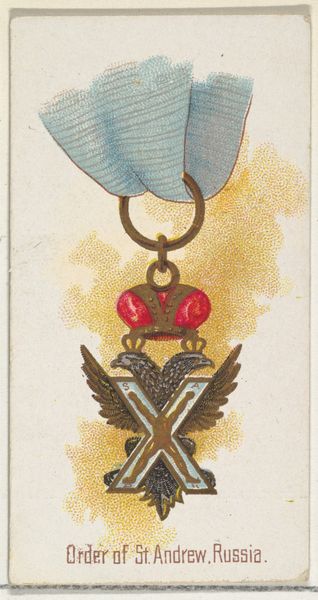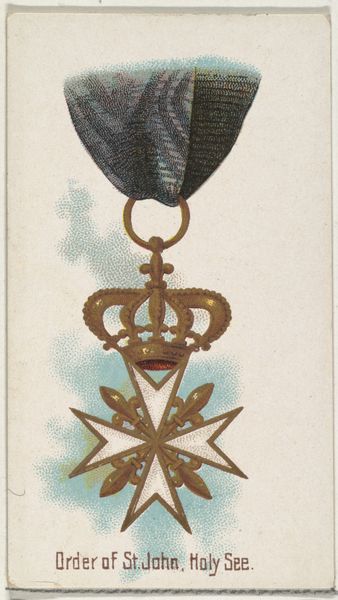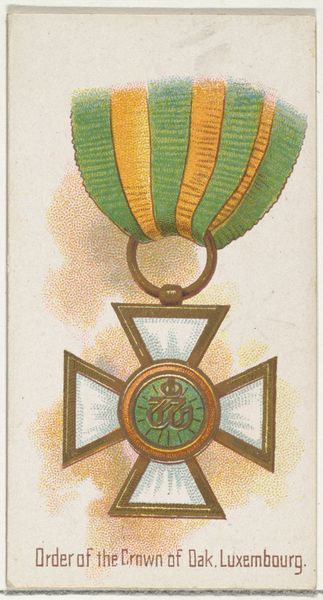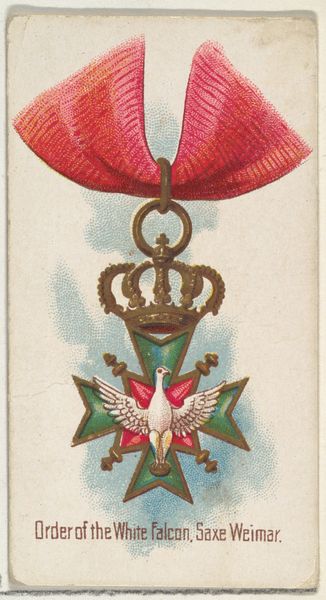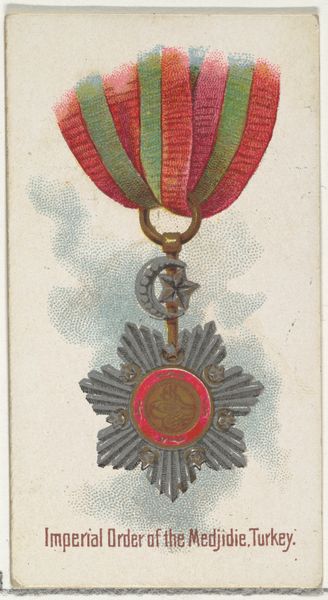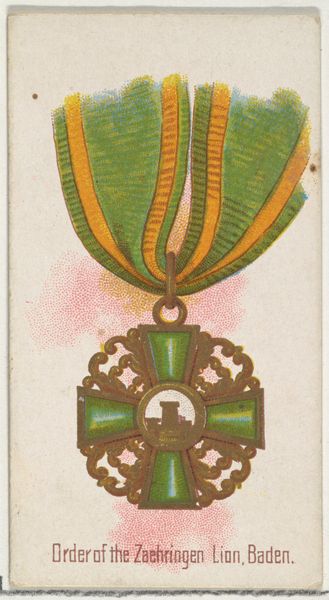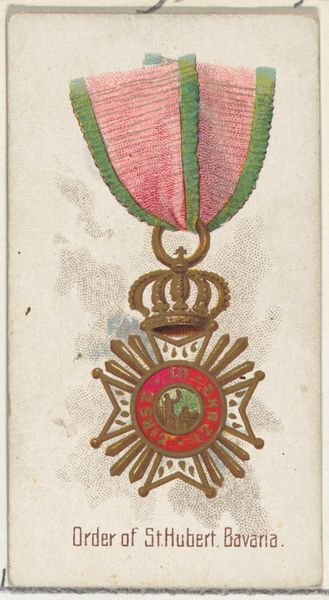
Christ, Holy See, from the World's Decorations series (N30) for Allen & Ginter Cigarettes 1890
0:00
0:00
drawing, graphic-art, coloured-pencil, print
#
drawing
#
graphic-art
#
coloured-pencil
# print
#
coloured pencil
#
symbolism
#
decorative-art
Dimensions: Sheet: 2 3/4 x 1 1/2 in. (7 x 3.8 cm)
Copyright: Public Domain
Curator: At first glance, there is a strange combination of grandeur and fragility. The colours are strong, but there’s a delicacy to the drawing. Editor: Indeed. What we are viewing is an 1890 print called "Christ, Holy See," which was part of the "World's Decorations" series created by Allen & Ginter for their cigarette packs. It combines the symbolism of Christ with imagery suggesting sovereign power. Curator: Cigarette cards. What a juxtaposition. The layering of the cross, crown, and what seems to be a cardinal’s hat evokes centuries of Christian iconography in such a compact form. It also raises questions about what it meant to imbue commercial objects with religious symbols in late 19th century America. Editor: Absolutely. Advertising and consumer culture began co-opting religious symbols. But look closer; isn’t there a dialogue here? The Holy See’s authority, visibly displayed for consumers, suggests a subtle form of social validation – associating cigarette brands with deeply-rooted cultural values to solidify their social acceptance. This speaks to power dynamics then at play. Curator: I’m curious how people interpreted the image. The arrangement surely aimed to impress. The colors used may evoke passion, divinity and even martyrdom depending on the viewers position within this matrix of faith and politics. How interesting to think of a commentary reduced to consumer dimensions. Editor: Context shifts the meaning drastically, right? The placement is critical – a mass produced trinket distributed alongside an item associated with vice. The casual commercialization of powerful spiritual and governmental motifs potentially reshaped how such authority was regarded. Perhaps diminishing its mystique within wider society. Curator: So, even though we see a symbol claiming immutable power, the symbol itself became fluid. The very medium challenged its core message. It served commercial goals in an era of nascent advertising. What endures through image transformation and recontextualization? What values do people choose to hold and pass on, given social pressures and shifts in power? Editor: Well said. Examining artwork such as this can lead us to rethink ways consumer culture engages with identity and belief structures. Curator: And that meditation can in turn prompt meaningful considerations about those structures in the current day.
Comments
No comments
Be the first to comment and join the conversation on the ultimate creative platform.
